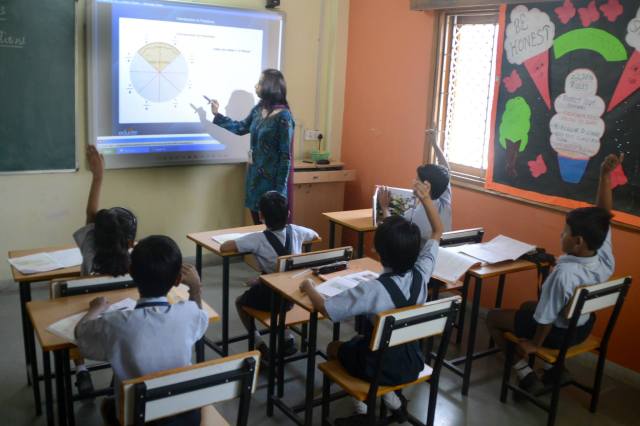‘‘Indian education needs greater thrust on skill and personality development”- says Pearson Voice of Teacher Survey, 2014.
Released on the occasion of Teachers’ Day, Voice of Teacher Survey is an annual initiative of Pearson, the world’s leading learning company. The survey focuses on topical issues facing Indian education sector and shares teachers’ perspective on the changing dynamics of the ecosystem. The 2014 edition of the survey focuses on the education system’s ability to drive learner outcomes and the challenges faced in achieving the same.
Check out the video message from Mr. Deepak Mehrotra, Managing Director, Pearson India, announcing the release of Pearson Voice of Teacher 2014 Survey findings –
Indian teachers have voiced their opinions on the current state of India’s learning environment through ‘Pearson Voice of Teacher Survey 2014’.
Here are some of the key findings of the survey –
- In India, 50% of the students entering any class lack the required skills. School teachers perceive a greater proportion of their students possess the skills (57%) vis-à-vis counterparts at higher education institutions (46%).


- In driving the desired ‘learner outcomes’, teachers are least satisfied with support received from Parents (54%). Teachers are most satisfied with students (83%) for support on driving learner outcomes; least satisfied with
parents (54%). Satisfaction is lower among higher education vis-à-vis school teachers.
-
79% of Teachers believe that the learning environment has improved over the past decade. The perception varies by segment/ level – school teachers view the changes more favorably (93%) vis-à-vis their counterparts in higher education (71%).

-
Teacher perspective at the state-level:
o Improvement in learning environment
• Highest – Karnataka (91%)
• Lowest- Telengana (64%)o Students with skills adequate for their class/level
• Highest – Karnataka (58%)
• Lowest -Andhra Pradesh (43%)o Technology perceived as an enabler of learner outcomes
• Highest – Jharkhand (61%)
• Lowest – Delhi (45%)o Perceived mismatch between syllabus and learner needs
• Highest % of teachers perceiving this a challenge – Telengana (77%)
• Lowest – Jharkhand (48%)o Focus of students and parents on exam results
• Highest – Madhya Pradesh (72%)
• Lowest – Kerala (61%)(% figure indicates the response of teachers at state level)
This year’s survey represents the views of 5145 teachers from schools and higher education institutes across 247 cities and towns in India.
Download the complete Pearson Voice of Teacher 2014 Survey findings here – www.pearson.co.in/vot





 “The secret of getting ahead is getting started”
“The secret of getting ahead is getting started” “There is no such thing as a child who hates to read; there are only children who have not found the right book.”
“There is no such thing as a child who hates to read; there are only children who have not found the right book.” “There is no such thing as a child who hates to read; there are only children who have not found the right book.”
“There is no such thing as a child who hates to read; there are only children who have not found the right book.” “No amount of skillful invention can replace the essential element of imagination”
“No amount of skillful invention can replace the essential element of imagination”
 “If we teach today as we taught yesterday, we rob our children of tomorrow.”
“If we teach today as we taught yesterday, we rob our children of tomorrow.”